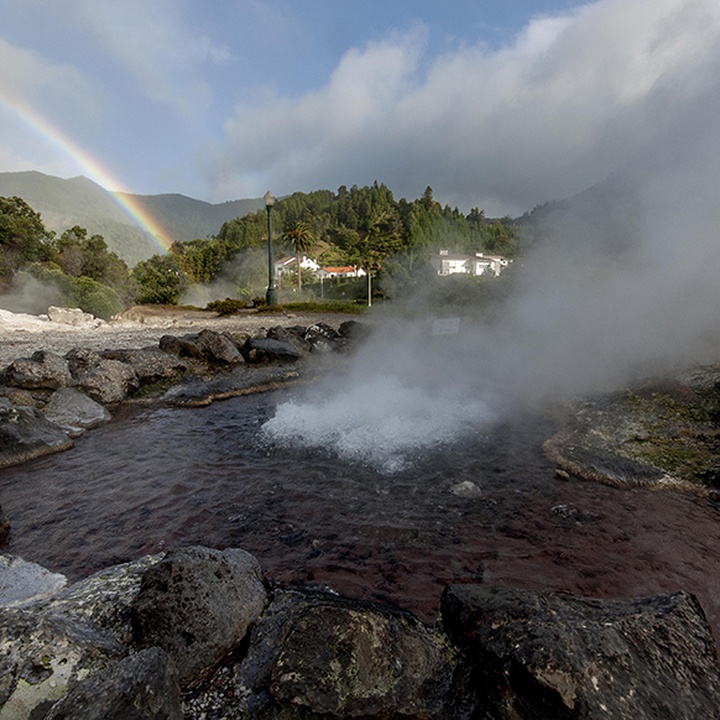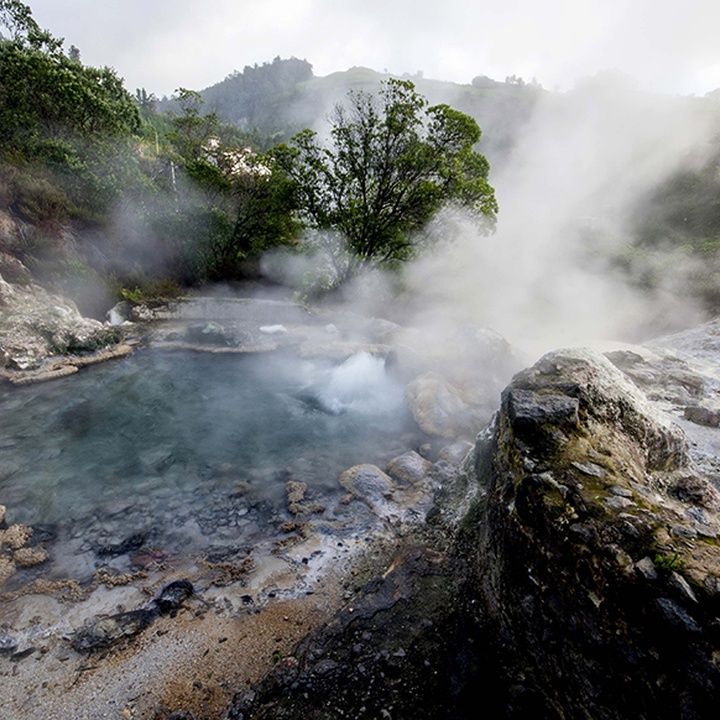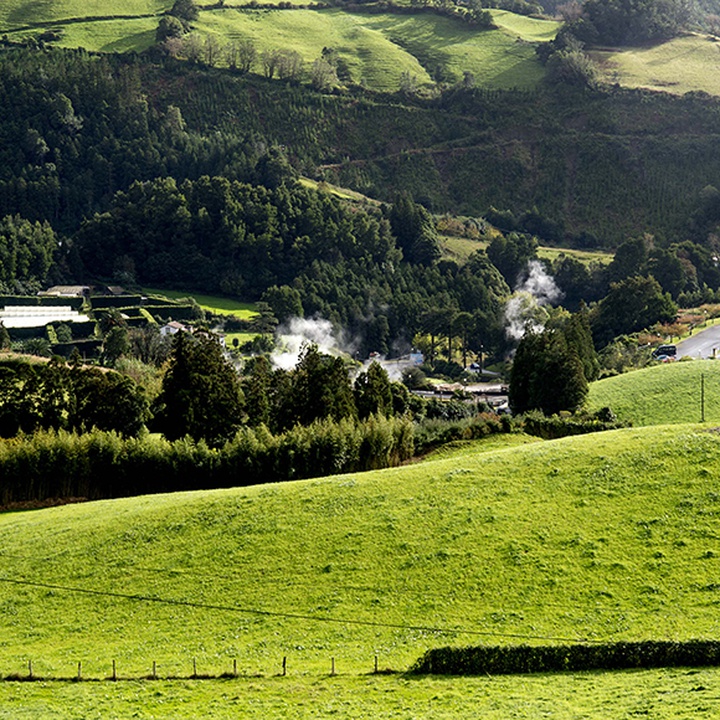Text size:
Furnas
Protected Landscape Area
This area has 3150 hectares and is located inside the caldera of the Furnas Volcano.
Furnas are well-known for its thermal baths and the usage of volcanic muds and mineral waters, which are examples of the local geocultural manifestations, of which the most emblematic is the “Cozido das Furnas” – a gastronomic dish, cooked inside holes on the hot volcanic ground, for about 5 to 6 hours.
It is also considered one of the largest water capital in Europe, due to the wide variety of thermal and mineral water springs. From these stand out the Poça da Dona Beja, hot spring water appreciated for its medicinal benefits.
The classification of this protected area was based on all the geomorphic and hydrologic uniqueness of Caldeira das Furnas, with an elliptic shape and a diameter of 8 kilometres maximum and 5.6 kilometres minimum. This caldera features the Lagoa das Furnas (lake), with about 200 hectares of surface, scoria cones, tuff-rings and trachytic domes (as the ones on Pico do Ferro), fumarolic fields and a large number and variety of water springs and mineral and thermal waters.
In the past, this area had a large patch of natural forest that was gradually being exploited. Currently, in the dominant plant communities, there is a large number of alien species, some are invasive, such as the Chilean Rhubarb (Gunnera tinctorial) and Australian Blackwood (Acacia melanoxylon). Punctually, specimens of endemic natural flora arise individually or in small groups as Azorean Holly (Ilex azorica), Azorean Viburnum (Viburnum treleaseii), Azorean Laurel (Laurus azorica), among others. The lake borders have a great richness of bryophytes, demonstrating leafy hepatics.
The recovery project of this lagoon has reintroduced thousands of endemic and native plants, which thinned or were extinct at this location, such as Azorean Picconia (Picconia azorica), Short Leafed Juniper (Juniperus brevifolia) and Azorean Buckthorn (Frangula azorica).
Regarding the avifauna, the Lagoa das Furnas is an excellent place to watch the Grey Heron (Ardea cinerea). The forested area surrounding it works as a source of food and shelter, allowing the observation of several endemic subspecies of the region, such as the Common Chaffinch (Fringilla coelebs moreletti), the Azorean Goldcrest (Regulus regulus azoricus) and the Common Buzzard (Buteo buteo rothschildi).
The surrounding area is characterized by a high number of species of invertebrates, some of which are endemic. It can also be found the Azorean Bat (Nyctalus azoreum). Concerning the aquatic fauna, the lake contains the Roach (Rutilus rutilus), the Eurasian Carp (Cyprinus carpio), the Northern Pike (Esox lucius), among others.
On the south margin of the lake is the Furnas Environmental Interpretation Centre with relevant information about the Furnas history, the geosite and the rehabilitation plan of its water mass.
Besides the visit to several viewpoints, in this protected area is also possible to do walking trails such as Lagoa das Furnas (PRC06SMI) and Pico do Ferro (PRC22SMI).
The Volcanic Complex of Furnas is classified as Ramsar Site since 2008 under the Convention on Wetlands and comprises a Special Protection Area (SPA) within the Nature 2000 network. The Lagoa das Furnas is still classified as a protected water mass through the “Plano de Ordenamento da Bacia Hidrográfica da Lagoa das Sete Cidades” (Furnas Lake Land Development and Watershed Plan – POBHLF). Together with two other protected areas of Povoação and Nordeste councils, it was awarded the European Charter for Sustainable Tourism in Protected Areas by the EUROPARC Federation.






